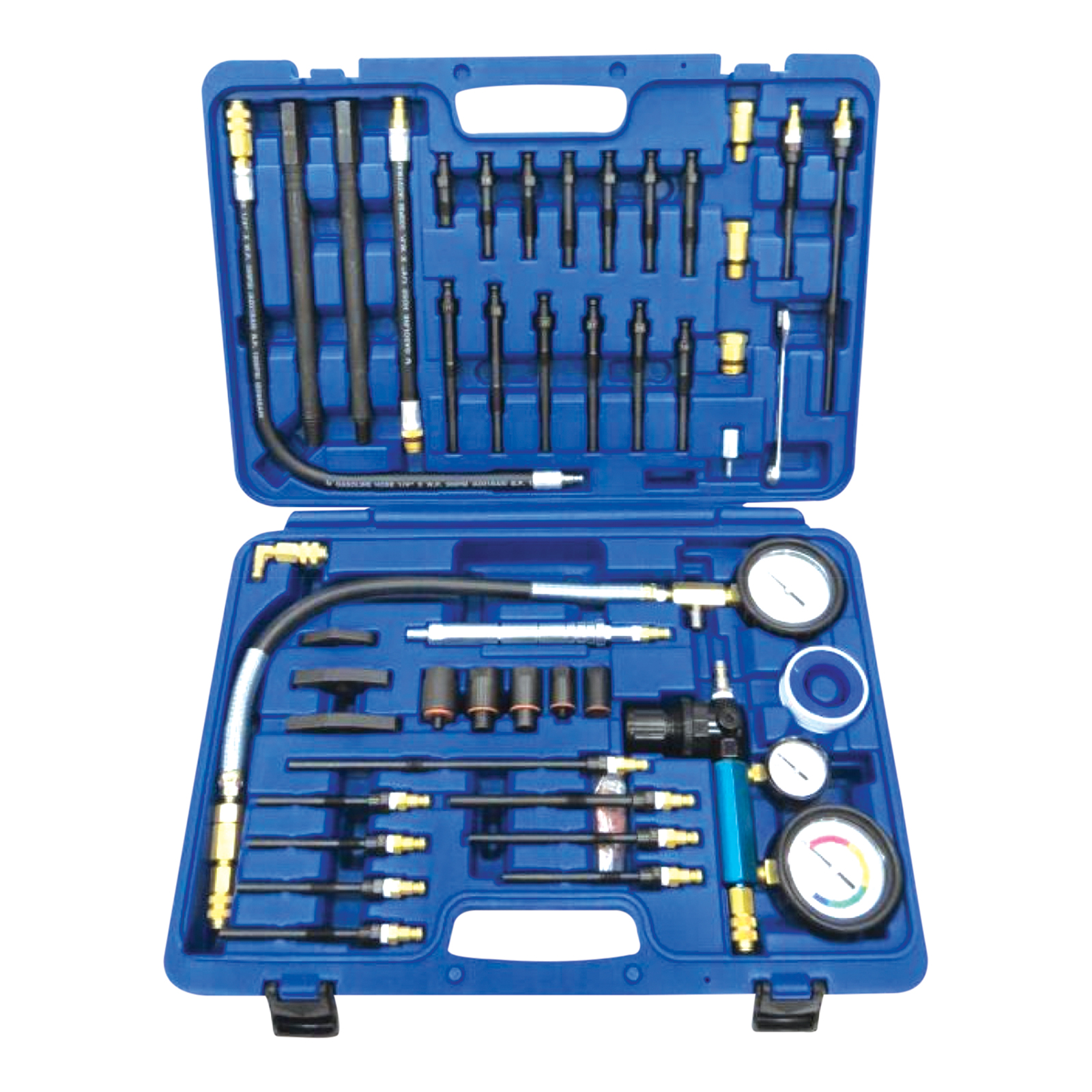


- COMPRESSION TESTER HOW TO
- COMPRESSION TESTER INSTALL
- COMPRESSION TESTER PLUS
- COMPRESSION TESTER PROFESSIONAL
Adding Oil To Spark Plug Hole For Wet Compression Test If the compression comes up markedly, 40 PSI or more, the trouble is, poor ring to bore sealing. Crank the engine, two revolutions or so to spread the oil, then retest the cylinder. So, you squirt the tablespoon of engine oil, into a cylinder, that is reading low. To perform the wet test, a tablespoon of engine oil, is poured into the cylinder, through the spark plug hole. Usually these tests, must be interpreted together to isolate the trouble, in cylinders or valves.
COMPRESSION TESTER HOW TO
How To Do A Compression Test (Wet) Many automotive books describe, a dry and a wet compression test together.

Firstly, the most desirable situation is that all cylinders, give the same or close to the same reading. On the other hand, a compression of 85 PSI or lower, is extremely bad. So, as a general rule a compression of 135 PSI or better, is excellent. There is more than one school of thought on, what the compression, of the average engine should be. Test all cylinders the same way, with the same number, of compression strokes.Note how fast the compression increases and write down the highest reading.You will be able to hear the cranking speed slow, as the tested cylinder, comes up on it’s compression stroke.First of all, connect the tester to a cylinder and turn the engine over, 6 to 8 compression strokes.Avoid any flames around the engine, during the test.Have your helper, fully depress the accelerator, while he is cranking the engine.While doing the test, the throttle and choke plates, must be fully open, for an accurate test.Above all, wear protective clothing and gloves, while working around a hot engine.Start with a warm engine, the ignition and fuel disabled, and all spark plugs removed.Because, this will make it easier, to remove the plugs next time around.
COMPRESSION TESTER INSTALL
Install and tighten the spark plugs, to the torque listed, in your vehicle repair manual, using a torque wrench. So, before warming up the engine, remove the spark plugs and add a dab of, anti-seize compound to the threads. This is very common, when you remove a spark plug, on a hot engine. 1 year warranty.Be aware, that late model engines, are mostly made of aluminum and therefore, are prone to spark plug thread damage. Includes comprehensive instructions in English, Spanish, and French. Note: it is very important to ensure that adapters are securely tightened to the hose to prevent possible separation when removing the tester from the cylinder head.
COMPRESSION TESTER PLUS
Includes adapters for most standard spark plug thread sizes: 10mm, 12mm, 14mm, 14mm long reach, and 18mm plus a handy repair kit with valves and rubber O-rings. The 17 inch, high-pressure, flexible, oil and grease resistant hose features a quick release connection at the gauge for faster, easier use. Gauge features a 2-1/2 inch diameter, easy-to-read white face with standard and metric scales: 0-300 PSI and 0-2100 kPa, highly accurate Bourdon Tube movement, and heavy-duty rubber boot. Convenient push-button side release valve allows repeated testing without the need to disconnect between tests saving you valuable time and eliminating the hassle.
COMPRESSION TESTER PROFESSIONAL
Bosch's FIX 7828 Professional Compression Tester Kit is an ideal tool for detecting worn piston rings, burnt valves, and blown head gaskets on most foreign and domestic vehicles, small engines, motorcycles, snowmobiles, and ATVs.


 0 kommentar(er)
0 kommentar(er)
